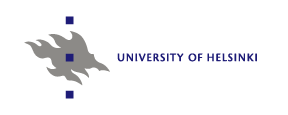- FIN-CLARIAH Research Infrastructure
A new national research infrastructure initiative FIN-CLARIAH for...
8.12.2021 8:12 by eahyvone - WarMemoirSampo published on December 3, 2021
A new “Sampo” application, “WarMemoirSampo”...
8.12.2021 8:04 by eahyvone - Five new SeCo papers accepted for the ISWC 2021
The 20th International Semantic Web Conference (ISWC 2021), the...
2.8.2021 6:53 by eahyvone
- Eero Hyvönen: Digital Humanities on the Semantic Web: from Infrastructure to Practical Applications, AI-based Knowledge Discovery, and Web of Wisdom
- Niks Kristofers Grislis, Kārlis Čerāns, Mikus Grasmanis, Heikki Rantala, and Eero Hyvönen: How to Add a User Interface on Top of an External SPARQL Endpoint: Case Nobel Prize Sampo
- Rafael Leal, Annastiina Ahola and Eero Hyvönen: Enriching Cultural Heritage Knowledge Graph Metadata from Finnish Texts with Large Language Models
- Michael Lewis, Eljas Oksanen, Frida Ehrnsten, Heikki Rantala, Jouni Tuominen and Eero Hyvönen: The Impact of Human Decision-making on the Research Value of Archaeological Data
The Finnish Geo-ontology
Large proportion of the resources on the Internet is geographically referenced (e.g. photographs and www-pages). Much of this information is identified by using free-text search and string-matching keywords such as place names or some other non-spatial search terms (e.g. topographic land cover categories) that refer to equivalent locations, but are not directly accessible by coordinate-based indexing methods. However, place names are rarely unique and they may be lost through the time. They may also have different meaning between people, and within the context they are used. Obviously, all this can cause low recall and precision in search and retrieval. To tackle these challenges we are developing a geo-ontology called Suomalainen paikkaontologia (SUO), which can be used e.g. in annotating resources.
SUO contains hundreds of classes that define different kinds of places; places that are either formed by nature (island, lake, etc.) or defined by humans (city, graveyard, etc.). Besides the hierarchical relations, there exists also mereological (is part of) and topological (overlaps, crosses, touches, etc.) relations between the classes. The instance data is derived from two different sources, namely Finnish Place Name Register (Paikannimirekisteri, PNR) and GEOnet Names Server (GNS).
The Geo-ontology SUO is created as a part of the FinnONTO.
in Finnish:
Suomalainen paikkaontologia (SUO)
Tämän FinnONTO-projektin osahankkeen tavoitteena on kehittää Suomalainen paikkaontologia (SUO).
Suuri määrä Internetin resursseita on sidottu paikkatietoon tavalla tai toisella: kaupungin www-sivulla kuvaillaan alueen matkailunähtävyyksiä, valokuva esittää kansallismaisemaa tai matkatoimisto markkinoi verkossa matkakohteitaan. Sijaintiin viitataan yleensä epäsuorasti paikan nimen perusteella. Paikan nimet ovat kuitenkin harvoin yksilöllisiä ja voivat muuttua, tai jopa hävitä ajan saatossa esimerkiksi hallinnollisista syistä. Tästä johtuen tiedon haku paikan nimen perusteella perinteisin menetelmin ei tuota tarkkoja ja halutunlaisia hakutuloksia.
Suomalainen paikkaontologia SUO pyrkii osaltaan ratkaisemaan tätä ongelmaa tarjoamalla kattavan käsitteistön niin suomalaisista kuin kansainvälisistä paikoista, mitä esimerkiksi tiedon indeksoija voi hyödyntää kuvaillessaan resursseja. SUO sisältää satoja luokkia mm. ihmisten muodostamista (esim. kaupunki, hautausmaa) sekä luonnon määrittelemistä (esim. saari, järvi) paikoista. Luokkien väliset suhteet ovat hierarkkisten suhteiden (ala-yläluokka) lisäksi luonteeltaan spatiaalisia; topologiset suhteet määrittelevät luokkien väliset maantieteelliset naapuruussuhteet, kuten päällekkäisyys (overlaps), leikkaavuus (crosses) sekä viereisyys (touches) ja meronymiset suhteet määrittelevät luokkien väliset osa-kokonaisuus-suhteet (is part of).
Paikkaontologioiden keskeisiä lähteitä ovat maantieteelliset paikannimihakemistot ja -rekisterit. Suomessa tällaista lähdettä edustaa Maanmittauslaitoksen tuottama ja ylläpitämä Paikannimirekisteri, joka sisältää kaikkiaan yli 800 000 paikannimeä koordinaattitietoineen. Kansainvälisten paikkojen osalta vastaavaa rekisteriä edustaa mm. GEOnet Names Server (GNS) (n. 5 000 000 paikannimeä). Nämä rekisterit toimivat SUO:n instanssiaineistona.
Yksi keskeinen SUO:n sovelluskohde FinnONTO:ssa on "ONKI-Paikka".
Artikkeleita
2008
2007
2006
Lisätietoja:
Tutkija Riikka Henriksson
Teknillinen korkeakoulu, Geoinformatiikan ja paikannustekniikan laboratorio.
riikka.henriksson [at] tkk.fi
Tutkija Tomi Kauppinen
Teknillinen korkeakoulu, Viestintätekniikka
tomi.kauppinen [at] tkk.fi
Professori Eero Hyvönen
Teknillinen korkeakoulu, Viestintätekniikka ja Helsingin yliopisto
eero.hyvonen [at] tkk.fi


